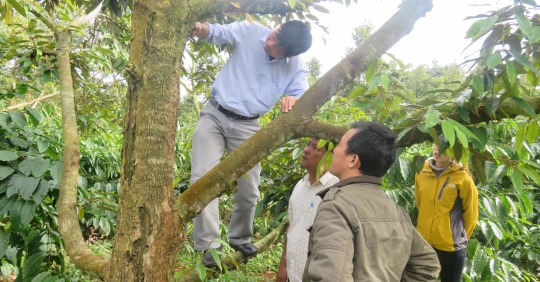On November 17, the Ministry of Plant Protection in cooperation with the Ministry of Agriculture and Rural Development of Dak Lak held a conference to review the plant protection work in 2022 and implement the work plan for 2023 in the south-central coast and highland provinces. The conference was attended by the phytosanitary subdivisions of the provinces in the region.
Crop protection is not just about protecting production
The South Central Coast and Central Highlands provinces will face complicated, extreme and unusual weather patterns in 2022 compared to recent years, according to the Central Plant Protection Center. At the beginning of the winter-spring harvest, heavy rains caused flooding and drifts like in coastal provinces. At the end of the season, extra-seasonal rains caused widespread flooding and falls, affecting rice and vegetable yields in townships.
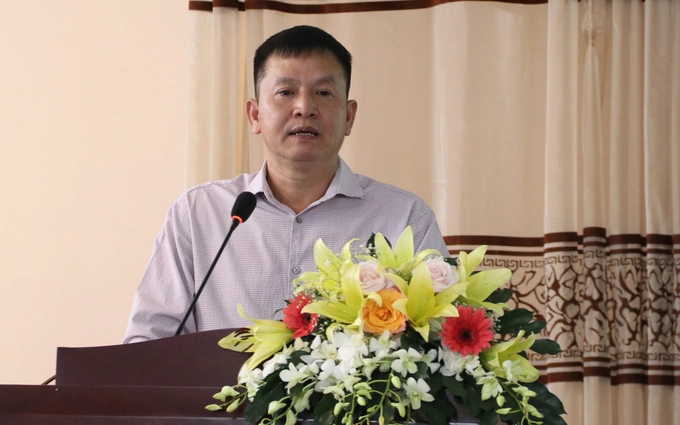
Mr. Huynh Tan Dat, deputy director of the crop protection department, emphasized the new responsibilities and tasks of the crop protection industry. Picture: Quang Yen.
In the summer-autumn harvest of 2022 in this area, despite regular rains, it is somewhat favorable for the growth of plants, but also favorable for pests on a large scale. Towards the end of the season, the unusual rainfall affected rice and vegetables on a large scale in the region’s townships, particularly in the lower-lying areas.
Some pests have complicated development in the region in 2022, such as: cassava virus mosaic disease; mosquito bugs, anthracnose on cashew trees; stem breakage disease on durian trees; diseases die fast, die slowly on pepper; Disease, death of Ngoc Linh ginseng seedlings.
In which 3,718 ha of rice were affected by planthoppers, leafhoppers, grain smut and yellow apple snail more than in the previous year; nearly 700 ha of corn damaged by autumn worm; more than 44,800 ha of cassava have leaf mosaic disease; more than 2,900 ha of durian suffered from Phytophthora sp. because…
As one of the places with a large cultivation area, Mr. Do Xuan Dung, deputy director of the Ministry of Agriculture and Rural Development of Dak Lak, said that the crop protection industry always plays an important role in the crop production of the whole country in general, especially in the province Dak Lak.
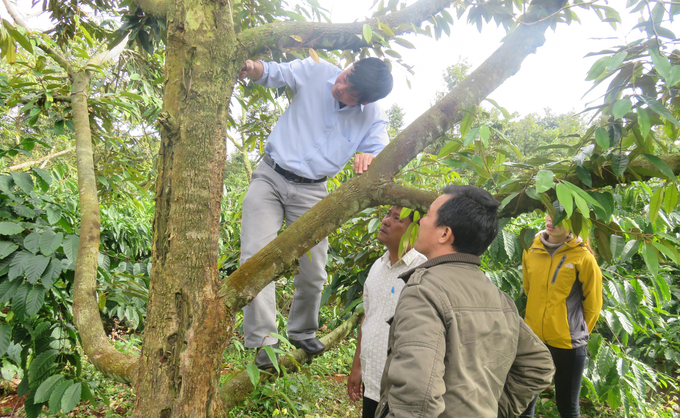
Officials from the Dak Lak Provincial Cultivation and Plant Protection Subdepartment examine durian trees for diseases. Picture: Quang Yen.
According to Mr. Dung, in addition to the mission of protecting agricultural crop production, the crop protection industry has brought practical and effective values to people, enhanced the value of goods, and increased income per unit acreage. In particular, the crop protection industry plays an increasingly important role in protecting the environment toward green and safe agriculture, protecting community health and ecology, and contributing to the successful realization of the plant’s goals. Vietnam commits to net-zero emissions by 2050 at COP26.
Therefore, from the central to the local level, the crop protection industry gradually applies high technology and digital transformation to increase efficiency, transparency and social responsibility to develop sustainable green agriculture, adapt to climate change, reduce greenhouse gas emissions while saving time to meet food hygiene and safety regulations for domestic consumers and for export.
Switch to take on many responsibilities
Mr. Do Xuan Dung added that the plant protection work of Dak Lak, as a province with a large cultivation area, is highly appreciated by the province, as it ensures the prevention and control of pests in an active and effective way and meets the standards of food hygiene and safety standards according to domestic ones and export standards.
To this end, the department has actively implemented the key policy documents and coordinated with municipalities and companies to organize many programs with talks, training and guidance on the dissemination of the quarantine protection law on crop protection. Alongside this, the department has also developed IPM, ICM field models and models that people can use to learn, raise awareness and replicate for production.
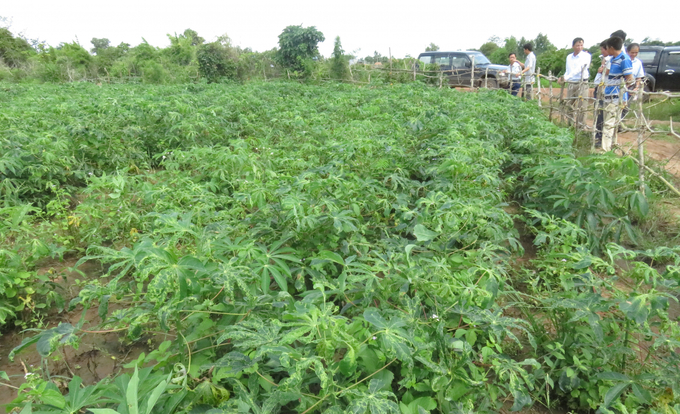
Cassava leaf mosaic disease is still a challenge for the crop protection industry in the Central-Central Highlands provinces. Picture: Quang Yen.
“Faced with the trend and consumer demand for clean production without pesticide residues and coupled with environmental protection, the ministry is focusing on building effective models for key crops. Strengthen training and dissemination of scientific advances in pest control to organizations and individuals, particularly crop protection and food safety training protocols.
In addition, integration of programs and projects to mobilize resources in the implementation and application of IPM and ICM programs for plants; Applying high technology and digital transformation in the field of crop protection to improve the effectiveness of inspection and monitoring of the effective use of pesticides,” said Mr. Dung.
Mr. Huynh Tan Dat, deputy director of the Plant Protection Department, said that the agricultural sector promotes sustainable production and develops green and clean agriculture. However, this still has many difficulties to overcome, such as B. climate change; epidemic problems; restructuring of plant varieties; the administrative apparatus, the direction of production was changed …
Faced with such a situation, the Crop Protection Department has identified and developed many key tasks throughout the industry. In particular: promote the organization and implementation of IPM, IPHM to introduce into production, to have the most friendly technical solutions in production, reduce pollution, safe for people and ecological environment. ; propose to the Ministry of Agriculture and Rural Development to include the organic fertilizer program in the resolution in order to use organic fertilizers sparingly and safely; Implementation of the program for the development of biological pesticides and the economical, safe, effective and responsible use of pesticides; Implementation of management programs for planting area codes, packaging plants…
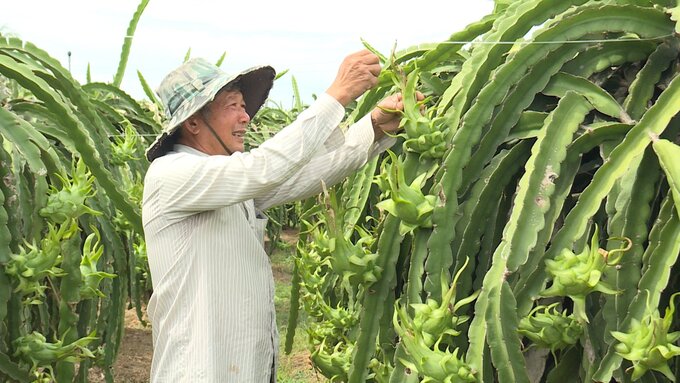
Over the years the crop protection industry has made very important contributions to the protection and sustainable cultivation of important fruit trees in the Central – Central Highlands region. Picture: KS.
“To do this, it is necessary to get involved with all ministries, sectors and functional agencies to help people raise awareness in production, good use of agricultural materials and quality of agricultural products. In the coming period, agriculture in the South Central Coast and Central Highlands will be geared towards developing areas specialized in important industrial crops such as coffee, pepper, rubber and tea. To form high-tech agricultural zones for the production of flowers, vegetables and fruit trees in the form of large-scale farms, free from disease, in a closed value chain with high-tech application; Promoting production towards organic, which brings high economic value,” said Mr. Dat.
Many tasks for the Central Plant Protection Center
In 2023, the Central Plant Protection Center will maintain and further stabilize the provincial-level specialized organization, consolidate and perfect the district level, improve the effectiveness of state management of plant protection and quarantine, pesticide and fertilizer management, and planting area codes, packing plant.
In particular, grasping the situation of harmful organisms in major crops, protecting the safety of crops, contributing to ensuring food security, improving product quality at economic costs, high economic efficiency.
Strengthening of scientific work, focus on solving regional and site-specific production difficulties; Actively apply science and technology (in pesticides, fertilizers, seeds…) to serve agricultural production in a sustainable way.
Consider the training, retraining and upgrading of professional qualifications for the contingent of civil servants and employees of the crop protection industry. Promote propaganda and training for farmers on the safe and effective use of pesticides, fertilizers, food safety, growing area codes and packaging equipment. Focus on communities in remote and isolated areas that produce vegetables and crops for export.

